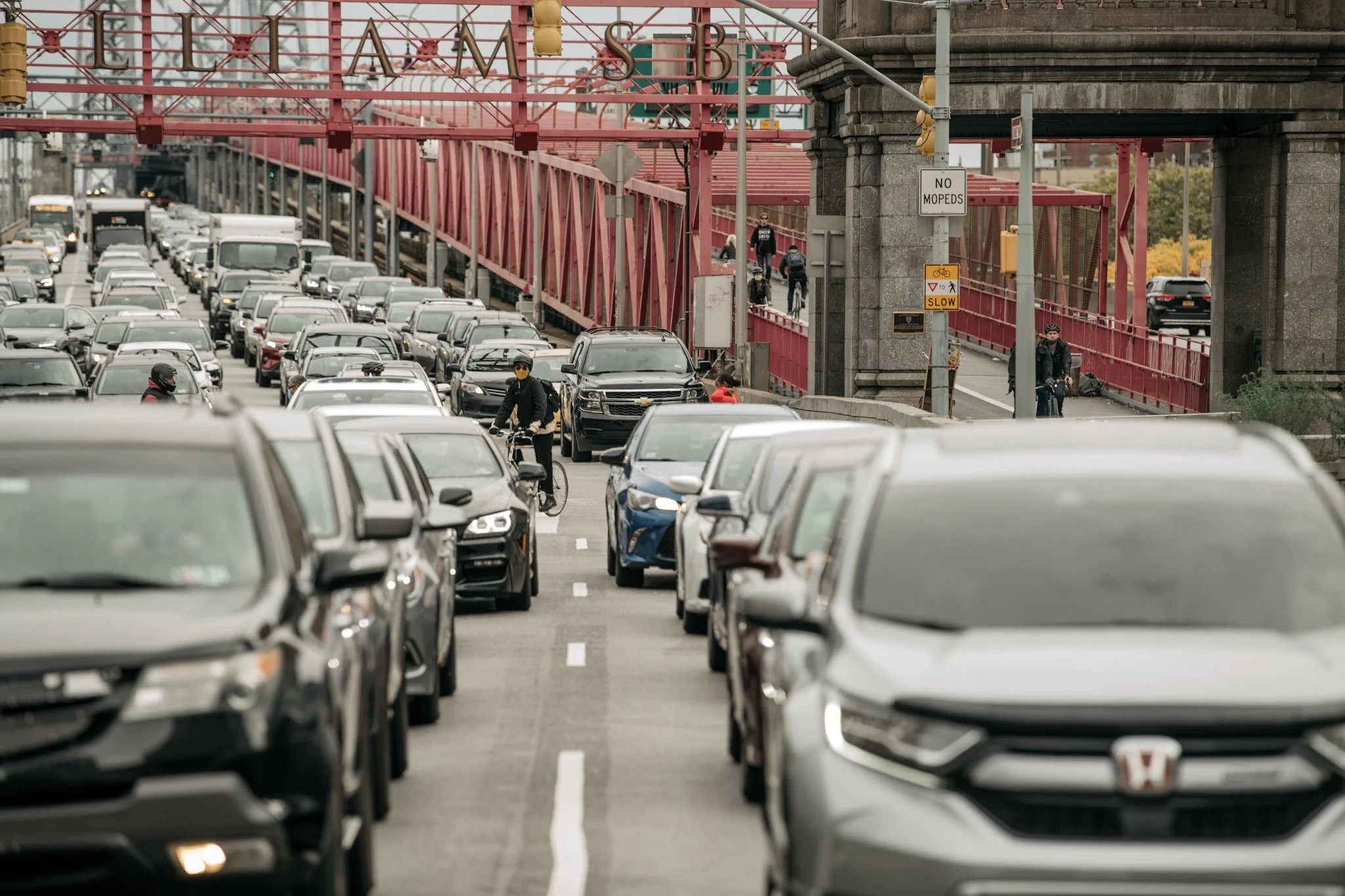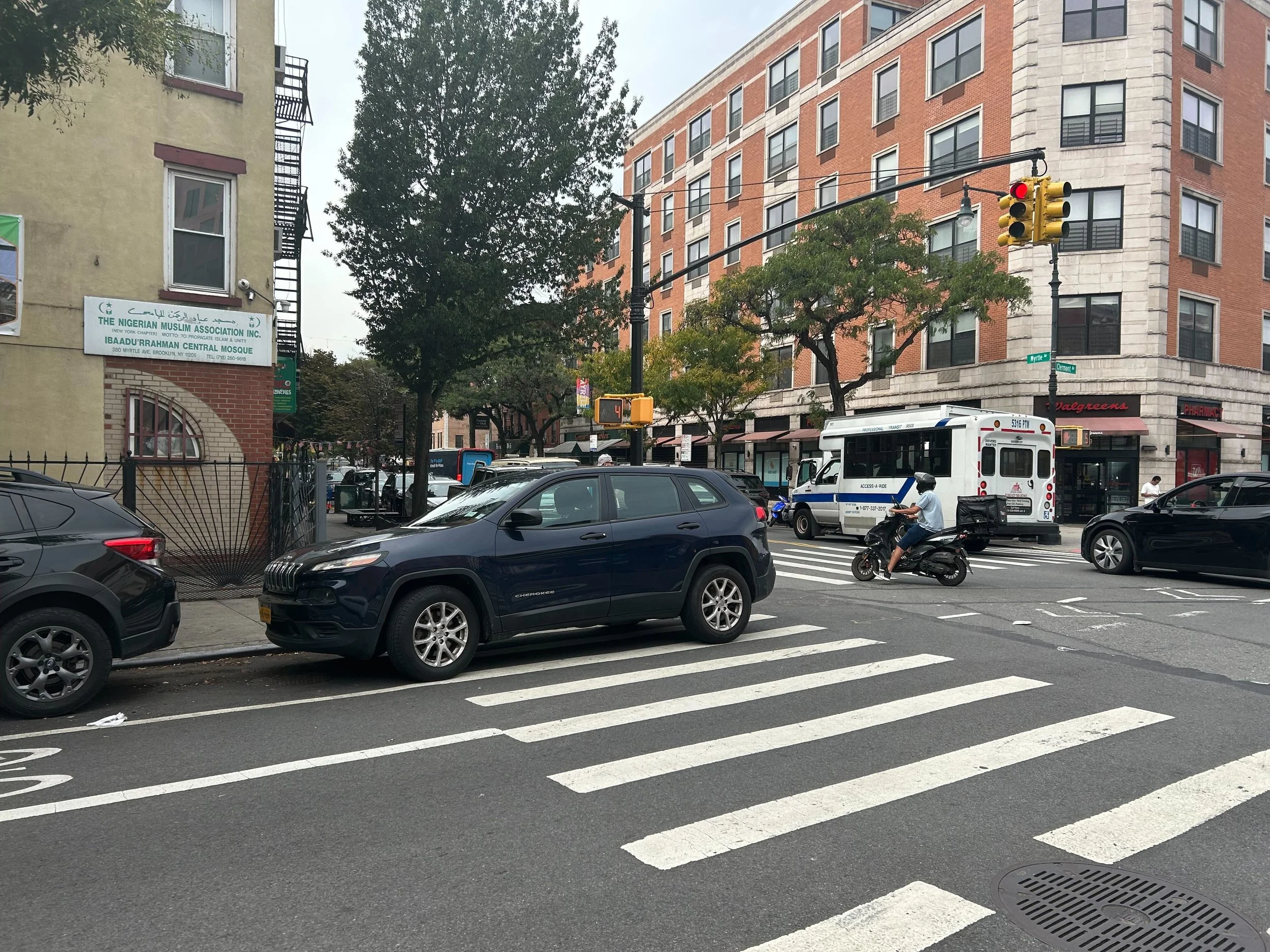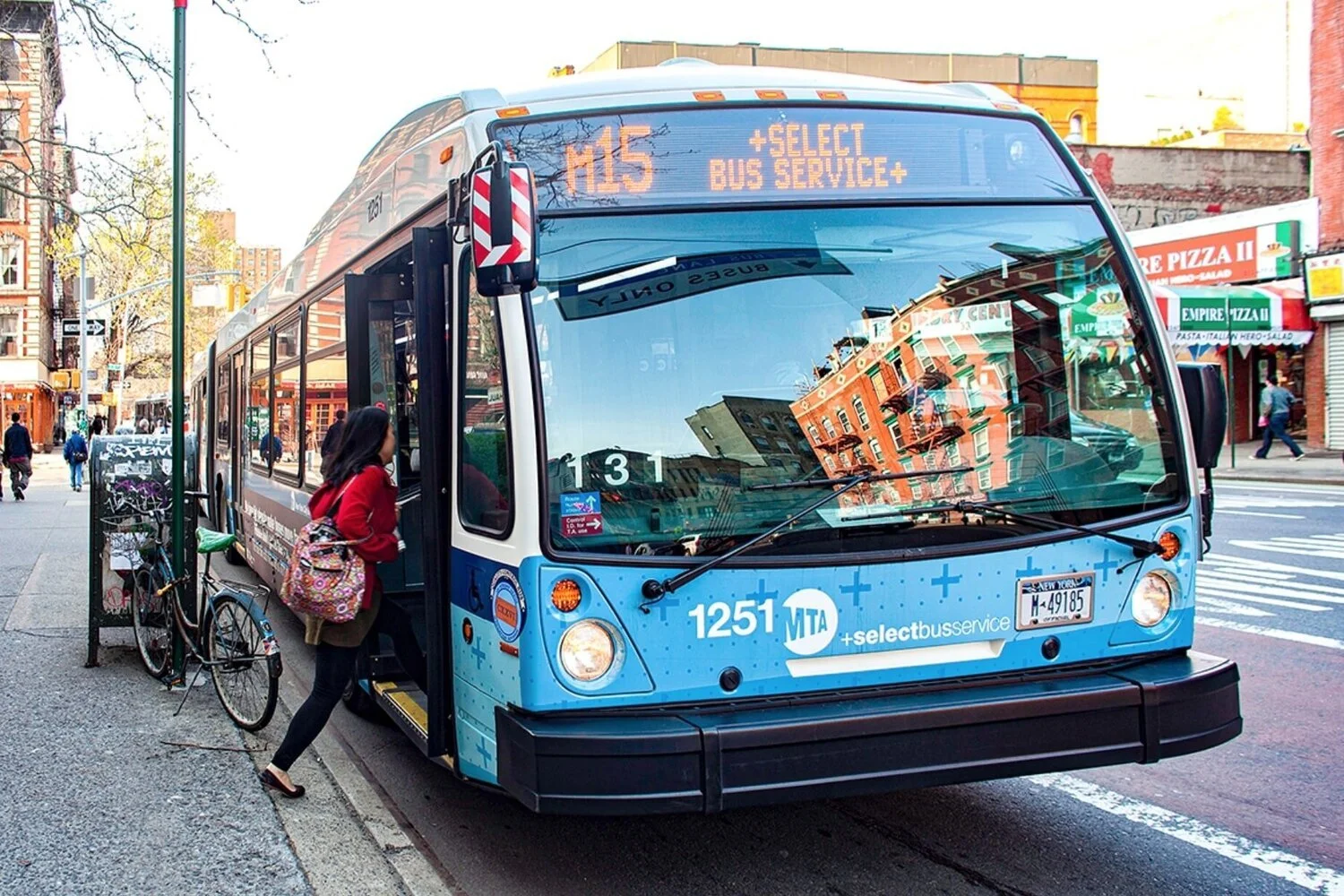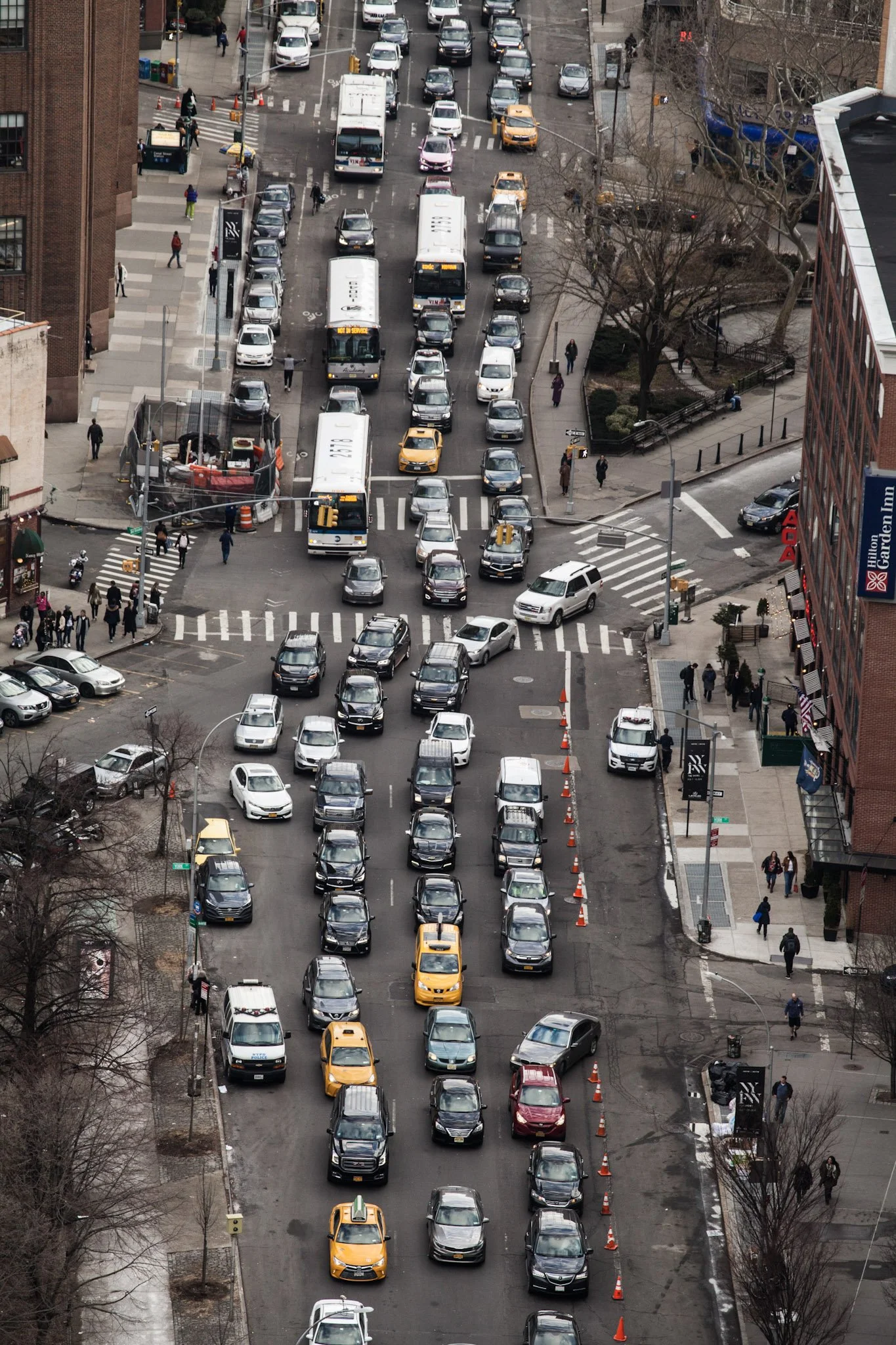There’s No Such Thing as a Free Parking Spot
The EasyPark Program Will Make Your Life Better if You Drive, Walk, Bike, or Ride a Bus in New York City
In New York City, 97% of the city’s three million on-street parking spaces are free — but really, they’re more of a free-for-all. Drivers in New York City spend an average of 107 hours per year looking for parking.
Free parking might seem like a perk of living in the five boroughs, but leaving the curb unpriced actually makes it more difficult to find a spot, negatively impacts businesses, slows traffic, and reduces safety — all while leaving billions on the table for New York City’s streets.
There’s a solution: the EasyPark Program
We can’t increase the number of parking spaces on our streets, but we can increase their availability. Demand-based metered parking, or the “EasyPark Program,” as we like to call it, is a system where parking meter rates change depending on how many drivers are using, or will be expected to use, the parking spaces on that block at a given time in order to ensure parking availability. That means no more circling the block waiting for a space to free up. For example, in order to ensure that spots are available near Madison Square Garden on the night of a big game, the meters could charge more on the blocks surrounding the arena during the hours leading up to the event. Conversely, when demand is low — such as on a quieter corridor overnight — prices would drop. Over time, the system learns from past patterns and anticipates future demand on a block-by-block basis. Prices may vary by time of day, day of the week, during special events, or seasonally. This is not a new idea — demand-based metered parking has been successfully implemented around the world, including in San Francisco, Baltimore, LA, and DC, to great success where it improved traffic flow and reduced circling. Like congestion pricing, skepticism melts away once the benefits of thoughtful infrastructure management become clear and tangible.
With the EasyPark Program, New York City could ensure that one or two parking spaces are available on every block at all times, giving drivers the predictability of parking on every block.
Today, New York City’s rates are based on six different zones, and just three zones cover 85% of New York City’s land area. This is an inefficient system, where meters across the street from Yankee Stadium are set to the same price as they are on Staten Island. In practice, this leads to zero parking where you need to go, and unused parking farther away. The EasyPark Program is data-driven, time-sensitive, and location-specific, to ensure no matter where you’re going, there’s a place for you to park.
Parking fights — longtime sitcom tropes in New York City — can be a thing of the past.
The EasyPark Program Supports Local Business
Drivers who are trying to run into a restaurant to grab takeout or stop into their local shop know the difficulty of finding a convenient space to park, with the curb space occupied by the same cars for days or weeks at a time. Without a spot, drivers often abandon their errand, park illegally, or leave their car running in a travel lane.
A pilot of demand-based metered parking in San Francisco found that impacted areas saw a 30% increase in shoppers, diners, and those seeking entertainment — significantly more than control areas. In addition, the pilot reduced long-term parking and allowed more turnover of spots, accommodating more customers.
The EasyPark Program Means Safer Streets
Drivers searching for parking are unpredictable, distracted, and driving additional unnecessary miles — all of which decrease safety for everyone on the street. Cars and trucks that can’t find a place to park but illegally park anyway reduce visibility and block traffic, bike lanes, crosswalks, bus stops, fire hydrant zones, and more.
San Francisco’s pilot program saw a huge reduction in illegal parking as a result of the new parking availability. Double-parking decreased by 22%, allowing smoother and safer travel for everyone.
The EasyPark Program Means Faster Buses
Without street parking, illegally parked cars can block bus lanes, and a single double-parked car can delay the commutes of hundreds of riders. Providing space for these drivers to legally park their cars can move parked cars from the bus lane to a parking spot, speeding up bus times drastically, improving ridership, and increasing the line’s predictability and frequency.
Transit riders in San Francisco’s pilot saw faster trips as buses no longer had to navigate around double-parked vehicles or let passengers out in the street next to a blocked bus stop.
Ridership on routes in the metered parking area increased by a whopping 21%.
The EasyPark Program Means More Resources for New York City
Implementing demand-based metered parking on just the top 25% most commercial corridors would raise over four billion dollars annually — money that could go to improving streets for everyone. In New York City, funding must enter the “traffic improvement fund” which must first pay for purchasing, installing, and maintaining the parking meters, but can then be used to “ameliorate traffic conditions which adversely affect the welfare of the city.”
With billions of dollars, city leaders could pay to maintain and upgrade street conditions, reduce bus fares, implement true Bus Rapid Transit, and improve the safety and livability of streets and public spaces around the city for everyone. This money would be at the discretion of the mayor — the rare program that could fund street infrastructure, reduce congestion, and improve business sales that doesn’t require approval from Albany or D.C.
Implementing the EasyPark Program in New York City
The EasyPark program will transform New York City for the better — and elected leaders can quickly implement it. While the local community board and council member must be notified if there are new parking rates, a change in meter type, or new meters four blocks or longer in length, City Hall has great power to choose where and when streets will be metered.
Recommendations
Implement Demand-Based Metered Parking at High-Demand Parking Locations. Implement thoughtful demand-based parking rates at up to 25% of the most in-demand parking spaces across the city.
Minimize Carveouts. With more carve-outs, the system is ripe for abuse. San Francisco found that blocks that already had high compliance with parking regulations enjoyed the biggest gains in benefits after demand-based meters were installed. The more drivers that are exempted, the less effective the program will be.
Meter All Day & All Week Long. Today, meters are not in effect on Sundays — despite most businesses operating and parking being in high demand. After implementing demand-based metered parking and ending free parking on Sundays, San Francisco found that the average parking search time was reduced by up to 61%. Cars parked for over 15 hours on Sundays also decreased by 66%, ensuring availability for potential customers. In the city that never sleeps, New Yorkers have places to be 24/7/365 — and there should be parking available for them when they need it.
Keep the Money in the Community. Through parking benefit districts, some of the money from metered parking could go towards enhancements in the local area. Whether it’s street safety improvements, better bus stops, curb extensions, or better bike lanes, local residents should see the benefits in their neighborhoods, no matter what mode of transportation they use the most often.
There’s a high cost to “free” parking in the five boroughs. How useful is a free parking space if you can’t park where you need to go? How valuable is free parking if it comes with dangerous streets, a stunted local economy, congested streets, and slow buses?
New York City’s three million free on-street parking spaces are a major untapped resource — and by metering just a fraction of them, it’ll be easier, safer, and better for those who need to park in the five boroughs.
The EasyPark program means you always have a parking spot when you need it, where you need it. It means your bus and your bike ride aren’t slow or dangerous because of double parking. It means you can actually drive to a local business, and it’ll feel safer if you’re walking there instead. What’s billed as free parking is ultimately just a tax on your time, your safety, and your neighborhood.
Methodology
The EasyPark program, implemented on just the top 25% most commercial corridors of New York City, will generate billions of dollars annually.
Pricing: The initial proposed baseline price for New York City was $2.50/hour in 2021 dollars, adjusted for inflation it is $2.93/hour. Premium zones, such as Midtown or the Financial District, were priced at $5-6/hour in 2021, which adjusted for inflation is $5.85-7/hour in 2025 dollars.
Elasticity: Parking demand elasticity is shown to be -0.4, which implies that a 10% increase leads to a 4% demand decrease.*
Zones: These numbers are based off of NYC’s existing six pricing zones, which are: Zone 1 (Downtown Brooklyn, Park Slope, 125th Street in Harlem), Zone 2 very high commercial density areas (such as Long Island City, downtown Flushing, downtown Jamaica), Zone 3 high commercial density areas (most of Harlem, Flatbush Ave, 167th Street in the Bronx, Sunset Park), Zone M1 (Wall Street and Midtown core), Zone M2 (South of 96th Street), and Zone M3 (96th Street to 110th Street).
Rates: Different hourly rates for different zones, ranging from 8-13 hours per day. In Zones 1 and 2, rates would remain for 13 hours, in Zone 3, they would remain for eight hours, and in Zones M1, M2, and M3, they would remain for 11 hours.
Occupancy Data: Hourly occupancy rates are borrowed from SFPark’s dataset (~58% occupancy in the mornings up to 68% occupancy in the evenings)
With these considerations, and assuming meters are running constantly, TA found that New York City has the potential to raise ~$14.94 million dollars a day if the baseline price is $2.93, and ~$12.80 million/day if the baseline price is $2.50. At ~$14.94 million/day, New York City would bring in $5.47 billion dollars a year — if the price posed on the first day remains for the year. With no metering on Sundays or the six holidays that are currently not metered, the program would raise $4.59 billion a year.
*Parking demand elasticity did not take into account congestion pricing fees.






